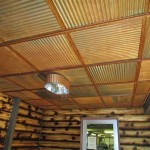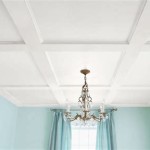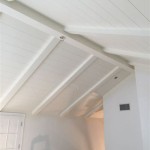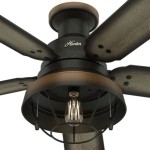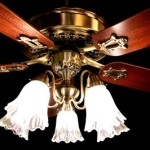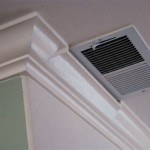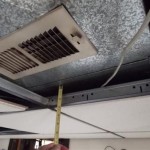Drywall ceiling textures are an essential part of interior design and decoration. They can add a unique and attractive look to any room, while also providing a range of practical benefits. Whether you’re looking to spruce up an old ceiling or create something entirely new, understanding the various types of drywall ceiling textures available can help you make the right choice.
Types of Drywall Ceiling Texture
There are several different types of drywall ceiling texture, each with its own unique look and feel. The most common types are popcorn, knock-down, orange peel, and comb.
Popcorn Texture
Popcorn texture is one of the most popular types of drywall ceiling texture. It is created by splattering a mixture of joint compound and water onto the ceiling, resulting in a unique look that resembles popcorn. The texture is easy to apply and relatively inexpensive, making it a great option for DIYers.
Knock-Down Texture
Knock-down texture is created by applying joint compound to the ceiling and then lightly knocking it down with a drywall knife. The result is a textured surface that is slightly rougher than popcorn texture, but still fairly smooth. Knock-down texture is a great option for those looking for a more subtle texture.
Orange Peel Texture
Orange peel texture is created by applying a thin layer of joint compound to the ceiling and then lightly spraying it with water. As the compound dries, it forms a unique pattern that resembles an orange peel. This type of texture is slightly more difficult to apply than popcorn or knock-down textures, but it can create an attractive, textured look.
Comb Texture
Comb texture is created by running a drywall knife or trowel along the wet joint compound. This creates a pattern of ridges and grooves that resemble a comb. Comb texture is a great choice for those looking for a more decorative texture, as it can add a unique visual element to any room.
Benefits of Drywall Ceiling Textures
Drywall ceiling textures offer a range of benefits, both practical and aesthetic. Textured ceilings can be easier to clean and maintain than smooth ceilings, as dirt and dust are less likely to accumulate. Textures can also help to hide minor imperfections in the ceiling, making it easier to make small repairs without having to completely redo the entire ceiling.
In addition, drywall ceiling textures can add a unique and attractive look to any room. Textures can be used to add visual interest and dimension, while also creating a sense of warmth and comfort.
Conclusion
Drywall ceiling textures are a great way to add a unique and attractive look to any room. There are several different types of textures available, each with its own unique look and feel. Textured ceilings can also provide a range of practical benefits, such as easier cleaning and maintenance, as well as hiding minor imperfections. Whether you’re looking to spruce up an old ceiling or create something entirely new, understanding the various types of drywall ceiling textures can help you make the right choice.













Related Posts

